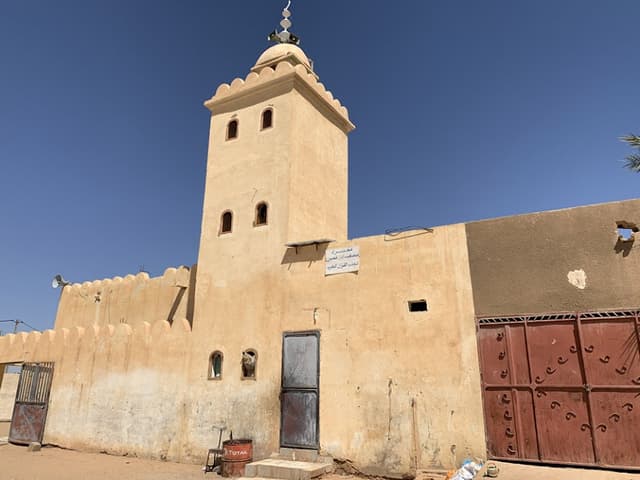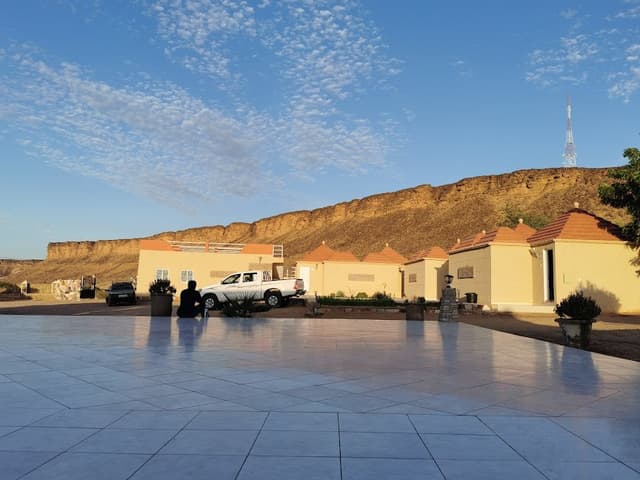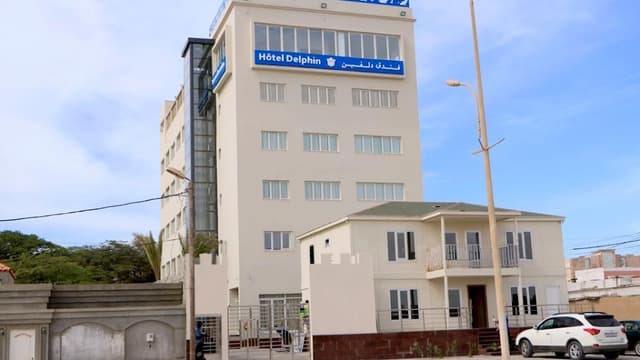Mauritania: A complete beginners guide

Arriving in Mauritania
Flights
There aren’t too many international flight routes into and out of Mauritania. The most popular include:
Royal Air Maroc from Casablanca
Turkish Airlines from Istanbul
Visas
All countries can get a visa on arrival at Nouakchott airport. It costs 55€ or $60, payable in cash only at the border - there is no atm so make sure you arrive with cash. You may be asked for your accomodation details so make sure you have those to hand in an email that you can show. There’s a landing card to be filled out too. Be warned, the waiting time for a visa can take a while, anywhere from 15-90+ minutes depending on where you are in the queue (meaning how quickly you got off the plane!)
Money exchange
There are several places to exchange euros and dollars in the airport. There is even a place still open at 3am to catch the super late night flights.
Airport transfers
If you arrive on a larger flight from Istanbul or Casablanca, there will be taxis waiting outside the airport that you can pick up. Prices can range from 1000-2000UM (25-45€) depending on time of day and where in the city you’re going - you should negotiate the price in advance..
With international flights from neighbouring Morocco landing at 2am (+ the added visa processing time!) the taxi area can be a little empty by the time you get out. The larger hotels in Nouakchott have airport shuttle services for around 1500-2000, which can be a huge help to know you’ve got transport waiting for you.
If you arrive on one of the smaller, less popular flights from Dakar or Tenerife, you’re less likely to find a taxi, as drivers don’t wait around for these flights. You should arrange other transport eg with your hotel or tour provider.
SIM cards/Internet access
Official telecom providers in Mauritania will not sell sim cards to anyone without a residency permit, so you won’t find anywhere to get one in the airport or in phone shops in town. You can however find sim cards on sale in the Marche Capitale (old market area) - you’ll need to speak French or Arabic (or use a translator app) to discuss what you need. Generally the SIM is around 1000UM (23€) and a data package of 10-12gb is around 200UM (4.5€)
Most eSIM providers do not have coverage for Mauritania, so you won’t find any on the usual sites of Airalo etc. If you have an international plan from home eg a global plan from the US, this will work in some places but won’t have full coverage in the country.
Otherwise, you’re going to be relying on WiFi when you can find it, and enjoying the peace of being offline when you can’t. Some higher end hotels have WiFi, as do some of the more expensive cafes and restaurants (eg Paul) so you can rely on this if you have minimal data needs. You find much/any WiFi outside of Nouakchott.
Language
The official language of Mauritania is Arabic. In Nouakchott people speak standard Arabic, though as you venture outside of the capital the main language is Hasawi(?), a dialect that’s a mix between Arabic and Amazigh. If you’re an Arabic speaker you’ll still generally be able to communicate albeit it might take a bit longer.
French is also widely spoken in Mauritania.
What to wear
Mauritania is generally quite a conservative Muslim country, so expect the usual general requirements of long pants and covered shoulders.
For women, you don’t need to cover your hair, though for those with light hair you may choose to in the major cities to limit attention. Otherwise T-shirts and jeans are fine. Avoid anything above the knee, especially if you’re in more traditional rural areas.
For men, again T-shirts and jeans are also fine.
Getting around the country
The only way of getting between cities is driving. You should note though that you often need permits to travel further up north in the country - there are checkpoints and they regularly ask for these. Tour companies will arrange this for you in advance so you should consult with them before making any plans to drive anywhere.
Nouakchott
Nouakchott, worth a visit, but not visited by many. This city can be divided in two part, the fancier part in the north, and the more rustic part in the south.
Sights






Food & drink


Where to stay



Atar
Located a 5-6 hour drive from Nouakchott, Atar is the capital of Mauritania’s Adrar region and known as the gateway to its historical sites. It’s also the last main town you’ll stop at before the train if you’re getting on at Choum. You can buy blankets, clothes, food and water here for your train journey, as well as taking a slow wander around the town, chatting to locals and seeing Mauritanian life in action. If you’re here for a few days, you can head out to see the surrounding sites and go deeper into the Mauritanian desert.
Sights




Where to stay lo


Iron Ore Train
The main event! And the reason most tourists head to Mauritania in the first place!
You can either get on in Zouérat or in Choum. Most tourists choose Choum, as it’s a much shorter journey (16-18 hours from Zouérat va 12 from Choum) and avoids being on the train while the sun is still up. Buckle up for the ride of your life 🚂
Know before you go
You NEED a blanket, it gets cold in the desert at night! If you’re going in winter time I’d even recommend a thermal sleeping bag. You should also bring old dark clothes as they’ll get covered in the ore. Most people buy a traditional Mauritanian scarf for covering mouth and nose, and you should bring a ski mask with you from outside Mauritania for eye protection on the train (you won’t find one in the markets here!). Many people choose to buy large trash bags to protect their backpacks; you can also buy extra large plastic laundry bags in Atar which do the same job.
You should grab water and light snacks (crisps/chips and cookies) in Atar or Choum before you head to the train.
It probably goes without saying that there are no bathrooms on the train….! Try to eat light the few days before you get on, and limit water intake in the house before the train. Try to pee as much as possible while waiting for the train. If you get absolutely desperate while you’re on the train, you can in theory pee in the corner of your cart, but everyone will know!! Pro tip, bring immodium, if your have a bad stomach reaction the day before/of the train it can be a life saver!
There is no set time when the train arrives, and there can be a 6 hour window waiting outdoors by the side of the tracks for it. Typically this is anywhere between 4-10pm but could be earlier or later, you have to check with local guides who have people in x monitoring when the train leaves. Get comfortable and keep your spirits high!
Put all of your belongings inside bags before you get on. Any electronics should ideally be put in plastic bags to protect them. The ore gets everywhere, especially if there’s magnets on your belongings (hello AirPod cases and iPhone cameras…!).
This one is optional - bring/ask your guide to bring a shovel, so you can rearrange the ore when you get in to make it flat and easier to sleep.
Getting on the train
If you’re getting on in Zouérat, you’ll have your pick of places to sit. If getting on in Choum you’ll need to scramble a little for your cart when the train arrives (often in the dark…!)
If you’re travelling with a guide, they’ll position you somewhere near the front of the train. This is absolutely what you want, as it makes for much better pictures! If alone, ask locals where the train stops and try to get a good idea of where you should wait with your stuff.
Try to avoid having other people in neighbouring carts as you’ll end up with them in your photos - leave a 10 cart distance if you can!
The train stops for 10-20 minutes, sometimes longer, but you should try to get on as quickly as possible, make sure your belongings are with you and secure, and find your spot to settle down.
On the train
Pick a corner for your bags and store them all there. Don’t put the bags at the back end of the train (facing towards the end of the train) as this is likely the side you’ll take sunrise photos and they’ll be in the way. Store them in the corner closest to the front of the train.
You should also designate another corner as the ‘bathroom’ just in case someone needs it in the night…
If you’ve managed to get a shovel, get busy flattening the ore as soon as you get on, ideally before the train moves so you can keep your balance. The train goes pretty quick when it gets up to full speed so try to avoid doing this when it gets moving.
If you’ve not managed to get shovelling goods, try to pick the flattest part. You can move the ore a little with your feet to flatten it a bit.
Avoid picking a sleeping spot right up against the walls of the cart, as they get super cold in the night making it hard to sleep. Try not to sleep sideways on a slope either as you’ll slip down it in the night and end up hip-to-wall with the side of the cart.
Get comfortable - wrap yourself up in your blankets and make your little nest. It’s a long ride ahead, you want to be warm and cosy, and able to get some sleep.
Finally - enjoy yourself! Look up at the stars, take in the cool air, wake with the sunrise and experience the thrill of whizzing through in the middle of the desert completely isolated with one of the best views in the world!
And as for jumping between train carts, I wouldn’t recommend it. The train really is moving fast and the gap is way bigger than you might think. It’s not worth the risk and there’s no going back if you fall between the carts and onto the tracks…
After the train
SHOWER. SHOWER. SHOWER. This is the first thing you’re going to want to do. It’s going to take 30-40 minutes to have a first attempt at getting the ore off, and you’ll likely need another shower later on to give cleaning another go. Try not to touch anything on your way into your hotel room. It’s a good idea to contact the hotel in advance and let them know you’re coming from the train and would like to explore an early checkin - you’ll likely get to Nouadhibou between 11-12 so you’ll want somewhere that will let you in early.
Sleep! You likely won’t sleep much on the train, so taking a nap to recharge after getting to Nouadhibou is highly recommended. There isn’t huge amounts to do in the town, so you can catch up on the sights at sunset once you’ve had some rest.
Nouadhibou
The city where you’ll disembark from the ore train. Congratulations, you made it!!
Nouadhibou is a port city, and Mauritania’s second largest city.
There isn’t a huge amount to do here, and if you’re fresh from the train you’ve likely had very little sleep and will spend most of your day napping… but you can walk around the city and experience the very different vibe to that in Nouakchott
Things are sleepier here, but also people are much more interested in you as tourists compared to Nouakchott, where nobody even turned their head.
You must also be careful with photos - in all port areas it is not allowed to take photos, although there are no signs. Police will appear and try to confiscate your phone if you’re taking photos, and if you don’t speak French or Arabic you can end up in hot water pretty quickly!
Nevertheless you should absolutely visit the port area to see Nouadhibou life in action. The Artisanal port is most central and easy to get to, and you can see how fishing is taking place here.

You can also head down to the bottom tip of the peninsula of Nouadhibou - though you’ll need a 4x4 as this is largely off road for the last few kms. Not only a cool place to say that you’ve been, but there’s also a centre for watching Monk Seals. Nearby is also an area where you can see a ‘graveyard’ of ships that have been run aground, although in recent years the government has begun to clear many of these away so there isn’t much left to see.


Where to stay

Food and drink
There aren’t than many higher end places to eat in Nouadhibou, but there are a couple of places to get a decent meal


Travel options
Whilst Nouadhibou has an airport, it isn’t open or functional, so don’t try to book flights from there back to Nouakchott or to anywhere else. There are some recent stories of people ‘booking’ flights from here to Tenerife only to turn up at the airport and find the flight doesn’t exist!
Your transfer option back to Nouakchott is a taxi or minivan. If you’ve done the train with a tour company, they’ll likely arrange this for you, otherwise your hotel can help. A seat in a minivan should cost around 60€ (if not already included in your tour).
And that’s Mauritania!
A taste of what to expect and how to get the best from your journey. Follow along for more off-the-beaten-track guides, pins, and itineraries!
The home for unique & authentic travel